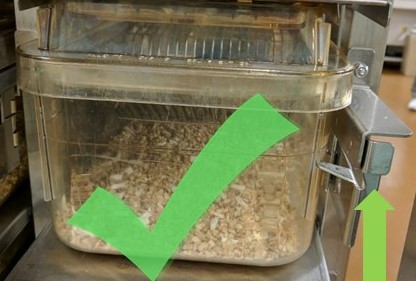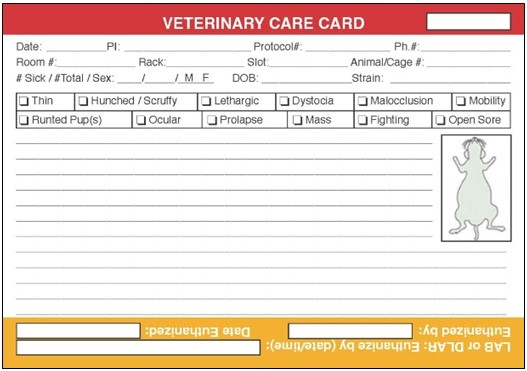DLAR User Manual for Researchers
This manual includes information to assist researchers with their use of the DLAR facilities.
Basic Room Information
Light Cycle
~7:00 AM - 7:00 PM DST (~March - November)
~6:00 AM - 6:00 PM EST (~November - March)
Adjustments require IACUC/DLAR approval.
Temperature
~70-74°F
Adjustments require IACUC/DLAR approval.
REPORT ABNORMALITIES TO DLAR!
Relative Humidity
~30-70%
REPORT ABNORMALITIES TO DLAR!
Cage Change
~Every 2 weeks (or as needed)
Adjustments require IACUC/DLAR approval.
Census Count
~Weekly (or as needed)
Room Cleaning
~Weekly (or as needed)
Hood Cleaning
~Monthly (or as needed)
Tech Time Fee
$30.00 per hour
Charged as $7.50 per 15 minutes
- Weaning
- Euthanasia
- Separation of Cages
- Malocclusion Treatments
Senior Tech Time Fee
$40.00 per hour
Charged as $10.00 per 15 minutes.
- Injections
- Genotyping
- Surgical - Post op Monitoring
- Etc.
Veterinary Professional Services
$76.00 per hour
Charged as $19.00 per 15 minutes.
- Requested as a part of researcher project
- Protocol approved surgery
- Necropsy or tissue harvesting to collect experimental data
- Veterinarian must provide surgical or advanced medical intervention for research-induced conditions.
Cage Docking
Placing cages on the rack correctly ensures the cage has access to water and HEPA filtered air.
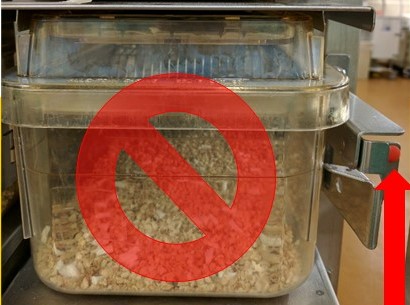
Look for the Colored Dot!
If you see a colored dot, your cage is NOT on the rack correctly! Remove your cage and try again.
Weaning
Mouse

1. Supply wet food and/or Boost in petri dish.
- One Boost can supply up to 3 cages.
2. Place a few pieces of animals' food on the cage floor.
3. Put the "Check Lixit" slip on the cage and make sure lixit works
Check Lixit Slips
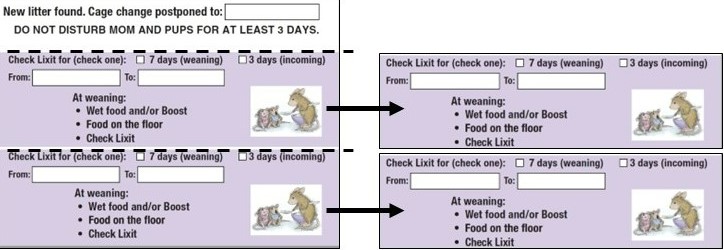
EXPECTING CARD = CHECK LIXIT SLIPS
Rat/Vole
1. Supply wet food in crock or paper cup.
2. Place a few pieces of animals' food on the cage floor.
3. Put the "Check Lixit" slip on the cage and make sure lixit works.
Check Lixit Slips

EXPECTING CARD = CHECK LIXIT SLIPS
Chemical Hazards
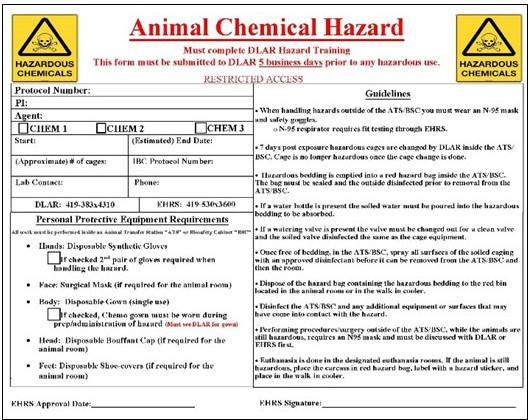
- Attend DLAR Hazard training first.
- Be sure to send your hazard door sign to DLAR at least 5 days before starting.
- Be sure to wear all personal protective equipment (PPE).
- Blue chemical gown may be required. See door sign.
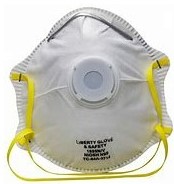
4. Always handle animals and cages in the hood.
-
- Must wear N95 mask* if working outside of the hood.
*Requires fit testing with Environmental Health and Radiation Safety (419.383.5089).
- Must wear N95 mask* if working outside of the hood.
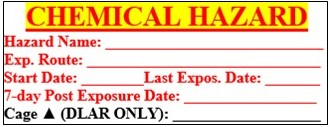
5. Use chemical hazard labels and fill out completely.
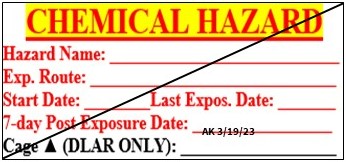
6. If a label is crossed off:
-
- Empty cages can be taken to cage wash
- Use regular carcass bags
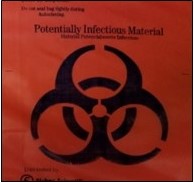
7. If label is NOT crossed off:
-
- DO NOT take empty cages to cage wash
- Use red hazard carcass bag
If you have any questions, see a DLAR staff member.
Clinical Concerns
*Report Emergencies to the veterinary Staff Immediately*
- Using a Veterinary Care Card (VCC), document the animals' condition. Fill out as much information as possible.
- The VCC is 2 parts. Remove the top part and turn it in the the Vet Tech office.
- Leave the 2nd part (carbon copy) on the cage.
- The clinical team will evaluate the animal(s) as soon as possible and will contact you with updates.
- If you find a VCC on a cage that you are euthanizing, complete the euthanasia section (yellow) and turn it in to the Vet Tech.
Important Contacts
- Dr. Lisa Root
419.383.4314
- Jamie Harris
419.383.1063
- Kimberly O'Meara-Schmidt
419.383.1499
Post Procedural/Chronic Care Monitoring
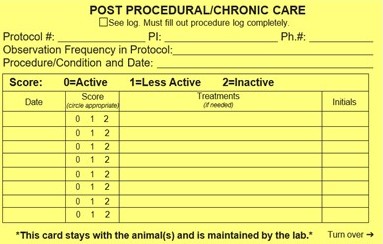
- The yellow Post Procedural/Chronic Care card and it's supporting document, the Monitoring and Supportive Care Log, must be used whenever a procedure, surgery, or phenotypic abnormality occurs which will impact the animal's health over time (i.e.: tumor growth, arthritis, paralysis, sepsis, aging, runted pups, etc.).
- The Post Procedural/Chronic Care card must be placed in front of the original cage card as soon as the adverse effects are visible. This card will stay on the cage for the life of the animal and then may be kept for your records after the animal has been euthanized.
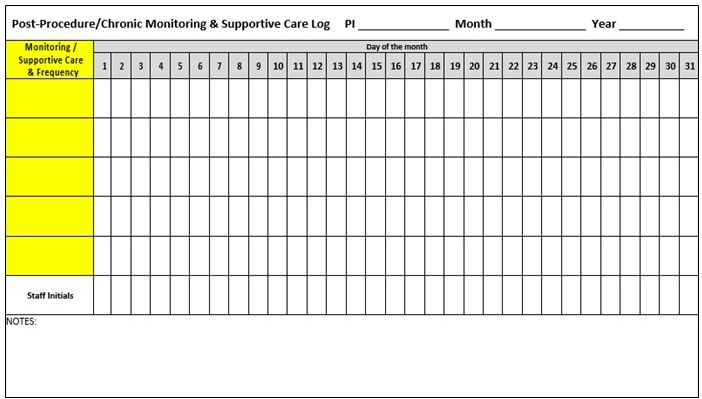
- The Monitoring and Supportive Care Log, located in the yellow clinical binder in the animal room, must also be completed, if not providing your own monitoring log. Be sure to include all monitoring and treatments and their frequency.
Open Incision Guideline
What do I do if the skin sutures or wound clips fall out and the incision is open?
- MUST consult with DLAR upon first observation of missing wound clip/sutures and/or
an open incision.
- Record the observation on the back of the green surgery card.
- Record the observation on the back of the green surgery card.
- DLAR will assess the animal(s) to determine the best treatment plan. Here are the
possible outcomes.
- Grade 0
- 1 skin wound clip/suture is missing but the skin incision is still closed/sealed
- No treatment (continue to monitor)
- Grade 1
- 1-2 skin wound clips/sutures are missing causing a small (<3mm) gap in the skin with a little pink or white tissue visible
- Treatment: Neosporin plus pain relief (a.k.a. TAO+) daily for 3 days
- Grade 2
- >2 skin wound clips/sutures are missing causing a medium (3-5mm) gap in the skin with a little pink or white tissue visible
- Treatment: Gently clean the wound, Neosporin plus pain relief (a.k.a. TAO+) daily for 7 days, and more frequent cage changing.
- Grade 3
- >2 skin wound clips/sutures are missing causing a large (>5mm) gap in the skin with a lot of tissue visible
- Treatment depends on how much time has elapsed since the surgery and the condition of the tissue. Call the Veterinarian (or Vet Techs) during business hours for further instructions.
- Grade 4
- Skin and body wall incisions are open, and organs are protruding out of the body cavity
- EUTHANIZE IMMEDIATELY!
- Grade 0
- In all the above cases, the veterinarian or the DLAR staff must be consulted so we
can discuss the situation and determine the best course of action for the animal's
health and welfare.
- After hours, on weekends or holidays, you will need to initiate treatment based on
the above criteria, and you will need to notify DLAR.
- Document the treatment on the back of the green surgery card.
- Phone numbers for Dr. Root and Ashley Kurth are posted in the facility.
- Dr. Root and Ashley Kurth also check emails throughout the weekend.
Animal Bite
Got Bit? - What to Do in Case of an Animal Bite
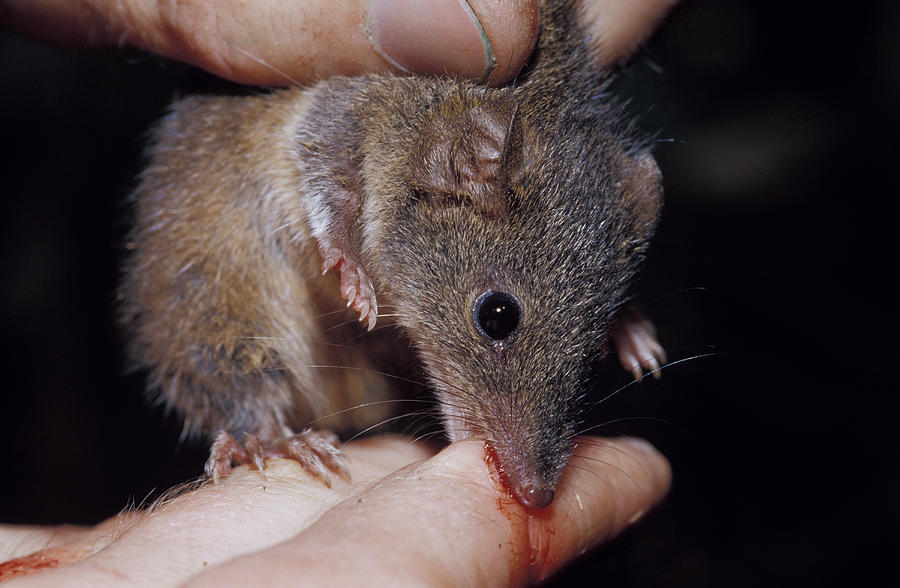
Clean It
- Thoroughly wash the wound with warm water and disinfect with soap.
- Cover it with a waterproof band-aid/dressing.
Report It
- Report the incident to your supervisor immediately and notify DLAR management.
- An Injury/Illness Report Form must be completed for any incident resulting in an injury or illness to an employee or student employee at The University of Toledo.
Treat It
- Discuss with your physician, EH&RS/Occupational Health (for referral to UTMC Emergency Department or Family Medicine), and/or supervisor about seeking further medical treatment.
For any questions, please contact Environmental Health & Radiation Safety at 419.383.5089.
Needlestick
Got Stuck? - What to Do in Case of a Needlestick
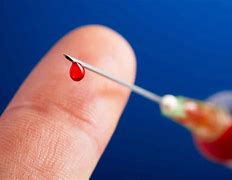
Clean It
- Thoroughly wash the wound with warm water and disinfect with soap.
- Cover it with a waterproof band-aid/dressing.
Report It
- Report the incident to your supervisor immediately and notify DLAR management.
- An Injury/Illness Report Form must be completed for any incident resulting in an injury or illness to an employee or student employee at The University of Toledo.
Treat It
- Exposed individual will go to the UTMC Emergency Department.
- UTMC Emergency Department will provide the exposed individual with PERRP Sharps Injury Form Needlestick Report. This must be completed in addition to the Injury/Illness Report Form.
For any questions, please contact Environmental Health & Radiation Safety at 419.383.5089.



